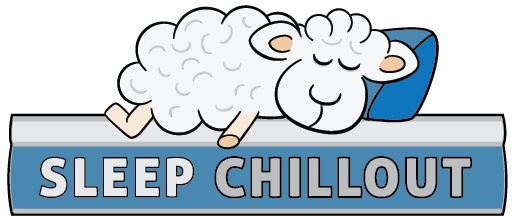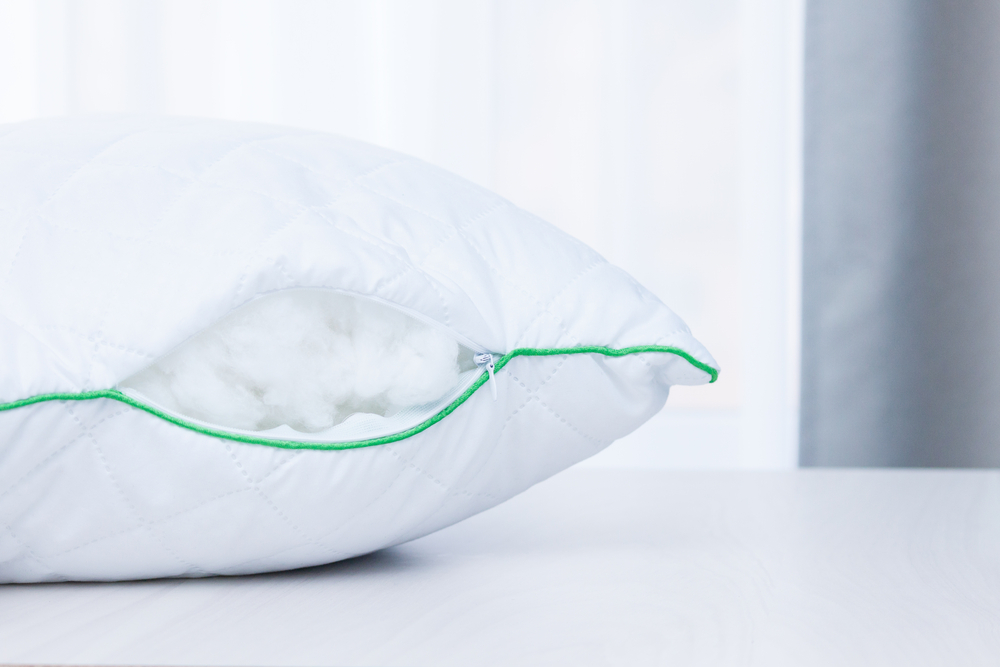Besides giving you a luxury sleeping experience, fluffing your pillow can keep it in top condition until it's time to let go of it. While it's true most individuals aren't replacing these vital sleep accessories frequently enough, there's no need to spend hundreds of dollars on a new pillow each time yours loses its fluff and comfort.
In this quick guide, we'll cover the different ways of fluffing a pillow to revitalize it and restore the fluff and plush comfort to its original state.
How to Fluff Pillows By Hand
When fluffing your pillow, one of the most accessible tools you can use is your hands. All you'll need to do is remove your pillowcase or pillow protector, grab the end of your pillow in each hand and push it in and out like you'd play a squeeze box, but much faster. For the best results, do this on the short and long sides for about 30 seconds. You can then reshape your pillow with your hands before fitting it into the pillowslip.
Note that: Down and feather are reasonably common allergies, especially in individuals with asthma and other lung conditions. So, ensure you're not allergic to these materials before fluffing up down pillows.
Hitting Your Pillow
You can also try simultaneously hitting your pillow on the sides to loosen up lumps and help expand the fill. Lay your pillow onto the mattress, put your hands into a fist, and give it a couple of good punches and smacks until you feel it swell up again. Feather pillows are usually the easiest to fluff by hand, as they feature the lightest fill material. If you're using a feather pillow, simply hitting its sides lightly should make your pillows fluffy.
Squeezing Your Pillow
Hold your pillow at the top and then move your hands to the midsection and a little above it. Next, quickly squeeze your pillow and let go simultaneously. Do this about five times. After squeezing your pillow:
- Shake it vigorously.
- Put it on your bed.
- Beat it with your flat hand on each side.
Massaging Your Pillow
Just as a good massage works magic on our bodies, it can also help our pillows look and feel good. This technique is beneficial if your pillow has significant lumps that need to break apart. You'll first want to locate the chunky parts inside the cushion and then massage them thoroughly. The goal is to break up these fill pieces to give them room to spread out more evenly. Besides increasing the loft and height of your pillow, this should improve its overall feel and allow better airflow.
Massaging your pillow is something you can implement every day - not simply when your pillows are so flat. Consider fluffing your pillows a few times when you wake up every morning to get fluffy pillows and help slow the flattening process.
Fluffing Pillows in the Dryer
If you don't have the time and energy to fluff your pillow, why not let the dryer do the tiresome work for you?
But first things first, make sure you check the tags on your pillow and go through the care guidelines to ensure it's dryer-safe. Note that: machine-drying pillows not meant for dryers only makes them lumpier and wear them down quicker, leaving you with flat, uncomfortable pillows.
If your pillow is dryer-safe, spinning it in the dryer will help it regain its fluff and plush feel without eating up your time and leaving your hands achy and tired. If you opt for this technique, consider using either a no-heat or low-heat setting to avoid burning your pillow. Also, don't place more than two pillows in your dryer at a time, as this will prevent them from fluffing properly.
The type of pillow you're using will help you determine how long you should dry it and what temperature you should put it in the dryer. For instance, if you have cotton pillows, throwing them in the dryer for 20 minutes on low should help.
Remember, there's no need to wash your pillow before tossing it into the dryer. However, if you decide to clean your pillow first, completely dry it before applying this method, as damp pillows are usually compressed easily.
Generally, there are two ways of fluffing a pillow in the dryer: with tennis balls and without tennis balls.
Related Content:
- How to disinfect a used mattress
- What causes holes in mattress
- Signs your bed is causing back pain
- How to extend the life of your mattress
How to Properly Fluff a Pillow Using Tennis Balls
If you're worried about lumpy pillows, you can amplify the fluffing impact of your dryer by throwing in another item to help knead the cushions during the fluffing process. Tennis balls should work well as they're hard enough to pound your pillow and break apart any clumped-up fill.
Simply put a tennis ball in a sock and tie it at the end before throwing it into the dryer with your pillows for a few minutes. Putting the tennis ball in a sock helps prevent yellow dye from transferring to your pillow's cover. You can also opt for specialized dryer balls for this method, which shortens the drying time while maximizing fluffiness.
How to Fluff a Pillow Without Tennis Balls
If you don't have extra tennis balls in the house, you can fluff your pillows the classic way by tossing two pillows in your dryer on opposite sides (to balance out the drum) and drying them according to the manufacturer's instructions.
There are also other objects you can use instead of tennis balls. Clean flip-flops, shirts, or towels should also suffice. If you have kids around, you can throw a dry stuffed toy, such as a teddy bear, in with your pillows. These objects act like tennis balls by keeping your pillows from staying at one point during the drying cycle. Just ensure that whatever object you use is dryer-safe.
How to Fluff Pillows Outside in Fresh Air
One of the main reasons your pillow might lose its fluffy texture and comfort is the moisture of your room. Another helpful tactic to consider is fluffing your pillow outside by giving it some much-needed fresh air. This method can also help you rid your pillows of bacteria and foul odors.
If your pillow is too delicate for the dryer, consider using the sun to remove moisture and avoid post-wash odors. About three hours of sunlight should do the trick. The heat from the sun will evaporate excessive moisture from your pillow, making the fibers inside it separate themselves. However, this is only possible if the weather outside is clear and sunny.
Related Content: How to get vomit smell out of a mattress
Can Sleeping on a Flat Pillow Impact Your Sleep?
Your pillow's firmness and height needs will significantly depend on your personal preferences and sleeping positions. For instance, if you're a stomach sleeper, using a flat pillow might actually help alleviate neck and shoulder pain. Stomach sleepers usually favor shorter pillows as they help keep their neck perfectly aligned with their spine.
However, other sleep positions benefit from a supportive pillow that can align the spine and the neck naturally. Side and back sleepers with flat pillows risk waking up feeling stiff or in pain, as the pressure on their neck muscles won't be evenly distributed.
If you live with shoulder or chronic neck pain, finding the right pillow for your comfort needs is crucial to having a good night's sleep. You might even have to use additional pillows to help stabilize your shoulder or neck. That said, make sure you consider a pillow's firmness, height, and feel before making a purchase decision.
Do All Pillows Need Fluffing?
Although fluffing a pillow helps extend its useful lifespan, not every type of pillow needs fluffing. As a general rule of thumb, a pillow with a shredded fill needs to be fluffed up, while pillows with solid cores don't.
If you're using a memory foam pillow, you shouldn't put it in the dryer, or else you'll only end up tearing the foam apart. Generally, a memory foam pillow doesn't need to be fluffed. Since memory foam is one of the most resilient materials that can be used to make a pillow, you'll be able to use yours for longer.
When Should You Replace Your Pillow?
As much as you may love your aging pillow, there comes a time when you'll have to throw in the towel and buy a new one. Generally, the life of a pillow is about four years, as they collect all the body oil, dead skin cells, and sweat you shed when you sleep.
While washing your pillows and mattresses regularly helps reduce visual dirtiness and odor, it won't help you beat the allergens that build up. Click here, for more information on how you can efficiently clean a mattress.
Dents and bumps are some of the tell-tale signs it's time to dump your existing pillow and bad mattress. And over time, your pillow will eventually wear down, resulting in deteriorated body support and less-than-ideal sleep quality. You can also squeeze your pillows on each end to check whether their cushions return to their standard shape, and if they don't, you'll know you need new ones.
Other signs you should replace your pillow include:
- Your allergies have gotten worse
- You often wake up tired
- Your pillow is seriously stained
- You're waking up with shoulder and neck pain
Old pillows are unsupportive, uncomfortable, and bad for your skin and overall health. That's why it's wise to replace them on time before things worsen. The good news is that fluffing your pillow regularly should help it last longer.
Closing Thoughts
Fluffing your pillow prevents it from getting flat, lumpy, and uncomfortable. It's also beneficial for aesthetic purposes, as it keeps your pillow full. However, it's worth noting that sometimes, pillows cannot be saved. While there's a lot sleepers can do to extend their pillows' support, quality, and life, they won't last forever, so it's crucial to realize when it's time to dispose of your favorite pillows.

